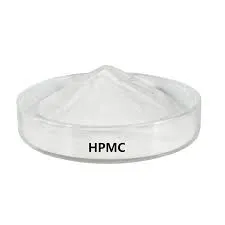
nov . 25, 2024 02:49 Back to list
Exploring the Applications and Benefits of Hydroxypropyl Methylcellulose in Various Industries
Hydroxypropyl Methyl Cellulose An Overview
Hydroxypropyl methyl cellulose (HPMC) is a versatile, semi-synthetic polymer derived from cellulose, which is a natural polymer obtained from plant cell walls. This compound has gained significant attention in various industries due to its unique properties, including its ability to form gels, retain moisture, and serve as a thickening agent. In this article, we explore the applications, properties, and benefits of HPMC across different domains.
One of the primary uses of HPMC is in the food industry. As a food additive, HPMC functions as a thickener, emulsifier, and stabilizer, contributing to the texture and quality of various products. It is commonly found in sauces, dressings, low-calorie foods, and bakery products. By improving the mouthfeel and consistency of these items, HPMC enhances the overall eating experience for consumers. Moreover, its ability to retain water helps prevent the drying out of food products, making it especially valuable in maintaining freshness.
In the realm of pharmaceuticals, hydroxypropyl methyl cellulose serves as a binder, film-former, and controlled-release agent in drug formulations
. Its use in tablet production helps improve the compressibility and stability of the tablets, enabling a more consistent release of the active ingredients. Additionally, HPMC is often utilized in eye drops and other topical formulations due to its excellent viscosity and non-toxic characteristics, ensuring safety and efficacy for patients.hydroxypropyl methyl

The construction industry also benefits from HPMC's exceptional properties. As a key component in polymer-modified mortars, HPMC enhances the workability, adhesion, and water retention of cement-based materials. This results in more durable and flexible construction materials, which are crucial for modern building techniques. Its ability to improve the consistency of mixtures allows for easier application and a smoother finish, thus meeting the rigorous demands of construction projects.
Furthermore, HPMC is increasingly being explored in the cosmetics industry. It acts as a thickening agent and stabilizer in lotions, creams, and gels, providing the desired texture and feel. Its hydrophilic nature allows products to maintain moisture, which is essential in skincare formulations.
In conclusion, hydroxypropyl methyl cellulose is a multifaceted compound with a wide range of applications spanning various fields, from food and pharmaceuticals to construction and cosmetics. Its unique properties and benefits make it a valuable ingredient that enhances product performance and quality, meeting the evolving needs of industries and consumers alike. As research continues and formulations evolve, the role of HPMC is likely to expand even further, solidifying its position as an essential additive in modern manufacturing.
-
Unlocking the Benefits of HPMC Products: A Gateway to Versatile Applications
NewsAug.07,2025
-
Unleashing the Potential of HPMC Ashland: A Comprehensive Look
NewsAug.07,2025
-
Tile Bonding Cellulose: The Key to Superior Adhesion and Durability
NewsAug.07,2025
-
Hydroxypropyl Methylcellulose Powder: The Versatile Component in Modern Pharmaceuticals
NewsAug.07,2025
-
Hydroxyethyl Cellulose: The Versatile Solution for Various Industries
NewsAug.07,2025
-
Hydroxyethyl Cellulose (HEC): The Versatile Polymer for Various Applications
NewsAug.07,2025







